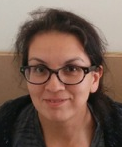On the site of an important Haida village on the northeast tip of Haida Gwaii, Old Massett Village Council has launched a promising venture in cultural revitalization and economic development: Hiellen Longhouse Village.
Old Massett Village Council: Transforming a Haida Village Site
Estimated Reading time

34 Mins
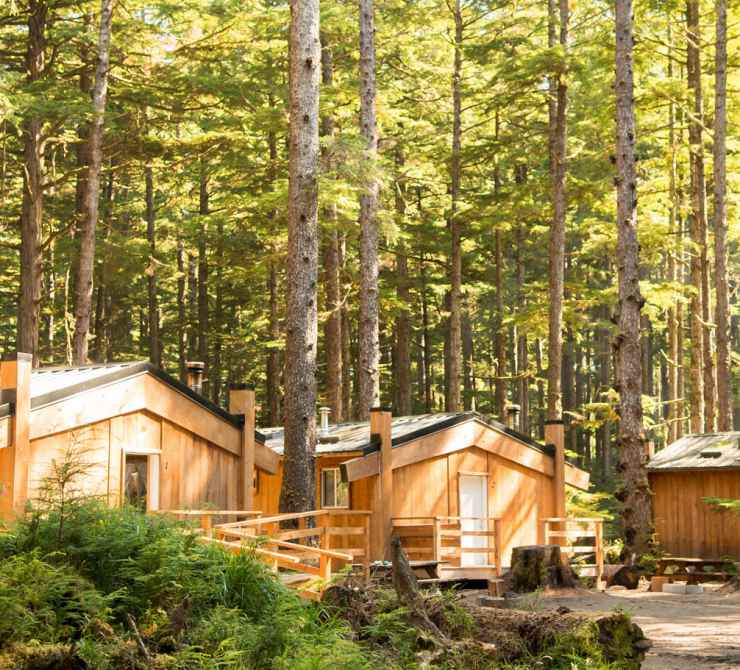
Hiellen Longhouse Village is on Graham Island, on the very northeast tip of Haida Gwaii—the ancestral homelands of the Haida Nation.
At A Glance
Old Massett Village Council has launched a promising new venture on a long-cherished village site of Tlielang. In addition to meeting a great demand for ecotourism experiences of visitors to Haida Gwaii and creating jobs and training for locals, it also hosts events that contribute to the Nation’s ongoing cultural revitalization. People enjoy a deeper connection to nature at Hiellen Longhouse Village—and leave with a stronger appreciation of the culture of the Haida Nation.
On the northeast tip of Haida Gwaii in the cool coastal forest on Graham Island, where Hiellen River meets pristine North Beach, Old Massett Village Council has launched a promising venture in cultural revitalization and economic development: Hiellen Longhouse Village.
Comprised of seven individually rentable self-contained cabins and a 10-room building that can be rented by groups, all styled as traditional Haida longhouses, the Village has a distinct feel. Guests don’t come for typical amenities like TV, internet, phones, central heating, linens, or even crystal-clear tapwater; nor do the guests themselves resemble any typical slice of the tourism market. But they probably leave with a deeper respect for indigenous peoples’ ties to the land—because Hiellen Longhouse Village is as likely to connect them with Haida culture, staff, and families who’ve descended from people who inhabited this site for millennia as it is to host independent young eco-adventurers, seniors, university groups, health retreats and wedding parties.
Tlielang—also known as Hl’yaalan ‘Lngee or Hiellen—was once one of the largest Haida villages. Its residents enjoyed access to the territory’s abundant razor clams, crab, salmon and dogfish—and benefitted from the defensive advantage offered by Taww Tow Hill, a remnant of a volcanic cone on the opposite bank of Hiellen River and the site of an elaborate fort.
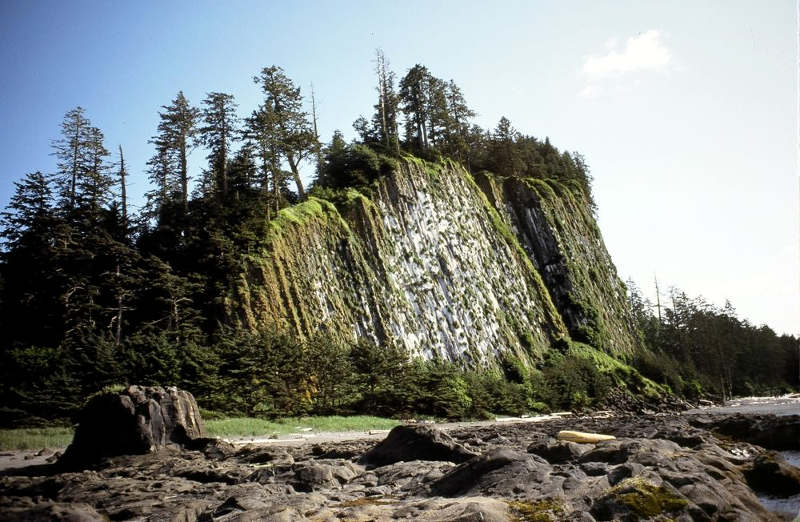
Tlielang was occupied until at least 1860, when Haida–Nisga’a warfare escalated to a point that Tlielang residents chose to abandon it for Old Massett. From 1923 to 1931, the site hosted a cannery that processed razor clams harvested from North Beach. A few decades ago, Old Massett Village Council— already co-managing Naikoon Park with the Province of B.C. and reasoning that Tlielang’s archeological values had been disturbed by the cannery—turned the site into a campground. Locals have long considered the idea of doing more with the site—including longhouses.
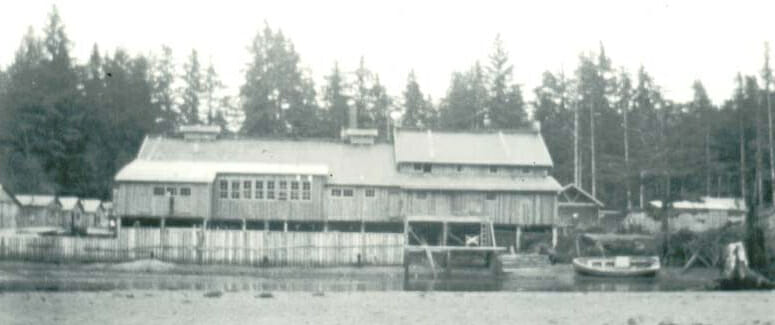
Connecting the Dots
“Hiellen was always on our radar—we just weren’t ready to start it,” says Patricia Moore, a member of the Raven clan from Old Massett and now the Economic Development Planner at Old Massett Village Council. “We were kind of an emerging community in terms of participating in Haida Gwaii’s tourism industry—with just a few gift shops and maybe one B&B.”

But by 2008, Haida Gwaii attractions like North Beach were projected to increase visits to the islands by 15% annually, demand for tourism experiences that connect visitors to indigenous culture and history was skyrocketing, and accommodation options in that part of the Island were scarce. Moore, with an MBA in Aboriginal Business and Leadership and a graduate certificate in project management from Royal Roads, was connecting the dots between these trends and community priorities.
“We also needed a local construction team to build and renovate houses,” she explains, referring to challenging problems of inadequate local housing for Haida Nation citizens, high unemployment due to a declining fishing industry, and low rates of high school graduation. In 2009, she helped Old Massett Village Council partner with Northwest Community College to develop a program that would help local students get their Red Seal ticket in carpentry.
“A lot of our students had been out of school for a long time,” relates Moore. The program’s initial approach, of trying to impart math skills in the classroom, didn’t work. “Most had had negative experiences in the school system and a fear of math. So we had to find a different approach—one that would build trust and self-esteem.”
Working with a local contractor, program participants started with modest house renovations, like ramps and porches. Then they returned to the classroom to explore the theory of what they’d just done. “[Instructors] would say, ‘Remember how we made that corner? Well, this is the math equation.’ Then everyone passed!” says Moore. “This approach worked for us, and that’s how the whole carpentry program was run.”
Everyone passed! This approach worked for us, and that’s how the whole carpentry program was run.
Carpentry program participants went on to build a teen centre, and then partnered with a North Vancouver firm to construct an apartment building. Fourteen people were now well on their way to Red Seal status but needed a lot more work to reach the 5,000 required hours.
Tlielang Hiellen’s potential suggested a solution. In 2007, Moore helped Old Massett Village Council flesh out a vision and business plan for Hiellen Longhouse Village: a set of seven 500-square-foot cabins and larger building that could accommodate groups, all styled in the tradition of Haida longhouses. Construction of the Village would not only employ the carpenters in training and use locally milled wood—it would also provide maintenance, caretaking, and potentially food service jobs for Haida people (including students in a culinary arts program, another Old Massett Village Council project that Moore helped launch).
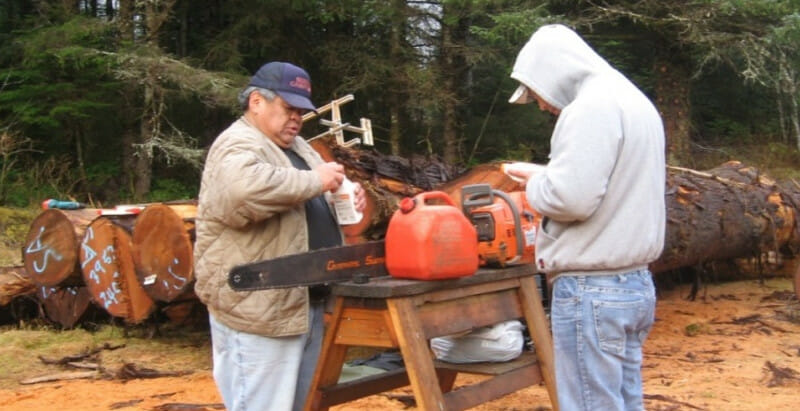
It would catalyze the start-up of other local businesses that could offer services to Tlielang Hiellen visitors, like forest tours, story-telling, clam-digging, and bike or ATV rentals. And it would put Tlielang Hiellen on the map as the starting point for an unforgettable multi-day trek through lush rainforest and pristine beaches that could conclude at Haida House, a Haida-owned eco-adventure lodge at Tllaal Tlell, for additional cultural tourism activities.
Realizing the Dream
With a business plan approved by Old Massett Village Council, Moore then set to work writing proposals. In about a year and half she had garnered enough funding to start making the Hiellen Longhouse Village vision a reality. There were a lot of pots of funds to access at the time, remembers Moore. “And I’m good at asking different organizations to believe in us, and invest in us,” she laughs.
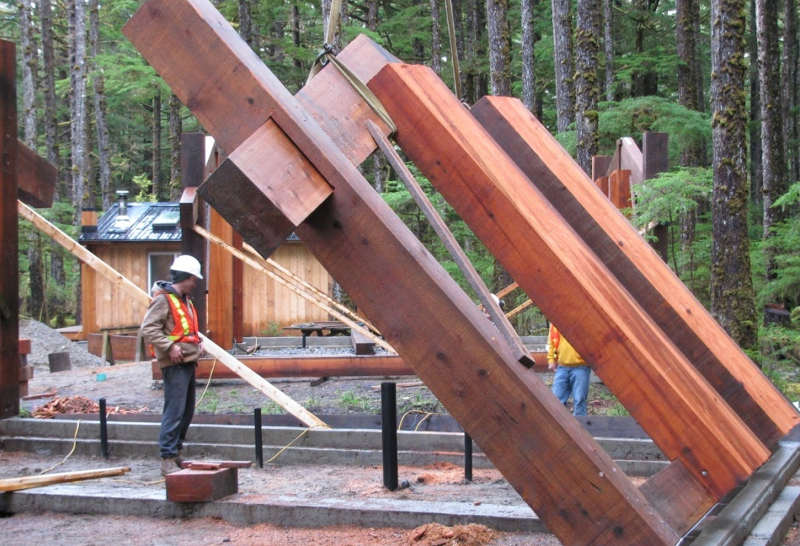
Construction on the 10-room, 2,400-square-foot longhouse and first three cabins began in 2012 and was completed before the 2015 operating season, when they were rentable on a by-donation basis while sewage and maintenance issues were worked out. Nestled in the coastal woods of Naikoon Park, adjacent to Tow Hill ecological reserve and steps from expansive beaches, these cabins can be thought of as luxurious indoor camping: simply furnished and extremely well-built, warmed by wood stoves, outfitted with hot showers, limited electric light, and propane stoves for cooking.

By 2016, after only two operating seasons, Hiellen Longhouse Village was already nearing break-even. Management was outsourced to a dynamic local woman who hires local people for caretaking and maintenance positions. Now in its third year, the Village includes seven cabins, the large longhouse, a 1,500-square foot welcome house, a central bathroom and powerhouse. Cabins are 70 to 90 percent booked, usually months in advance and even with minimal advertising. Avid surfers come out in November, and the Christmas season is booked solid. Hiellen Longhouse Village—particularly the large longhouse—also attract a wide range of groups, including weddings and family reunions, schools from on- and off-island, universities offering courses in topics such as indigenous languages and ecology, First Nations youth summer camps, and health centres offering retreats.
New Meaning to ‘Aboriginal Tourism Experience’
Moore was admittedly surprised by the fact that independent travelers—that is, mostly younger, ecotourism-focused market from off-island—make up a much smaller percentage of Hiellen Longhouse Village customers than initially projected. People from the Island and their families (about half of whom are indigenous) are in fact the mainstay of the business; independent travellers from outside of Haida Gwaii only represent about 30% of individual visitors.
“Hiellen wasn’t built just to make a profit,” notes Moore. “It was about jobs, building tourism infrastructure, and supporting people from Old Massett that want to create their own employment, offering new services.”
Hiellen wasn’t built just to make a profit … It was about jobs, building tourism infrastructure, and supporting people from Old Massett that want to create their own employment, offering new services.
And that’s happening. Everyone who stays at Hiellen Longhouse Village gets a list of locally guided activities, such as surfing, clam-digging, birding, and tours of Haida cultural sites. A local woman has set up a surf shop, which has helped extend the business’s shoulder season. Old Massett Village Council’s culinary arts program (which employs four locals) caters events at Hiellen Longhouses, and is now partnering with the Haida dance group, Tluu Xaadaa Naay (Canoe People’s House) to stage fundraising cultural events for Tlielang Hiellen visitors on Friday nights. And the people who built Hiellen Longhouse Village have since developed a cabinet-making business that serves the Haida Gwaii market and beyond.
As regards workers who built the longhouses through the carpentry program, Moore emphasizes that she cannot speak for them—but offers a few thoughts about how it has contributed to the community.
“There is a lot of poverty in Old Massett. It truly affects self-esteem—people start to doubt themselves,” she says. Carpentry program workers were given an hour a day to talk to a counsellor if they wanted, and some of them used that opportunity. Moore recalls that most of the workers were involved in the justice system when the program began, but that declined sharply over the course of the project. “Most of them are working now,” reports Moore, adding that one has started a contracting business. One worker told Moore that his participation in the program helped him leave alcohol dependence behind—for good. “I think it made a big difference for them to have a job,” reflects Moore. “And they were so excited to build a teen centre, which they didn’t have when they were growing up.”
Ultimately, Hiellen Longhouse Village isn’t just marketing “aboriginal tourism experiences”—it’s creating meaningful experiences for local Haida citizens—as employees, clients, and the broader community of Old Massett.
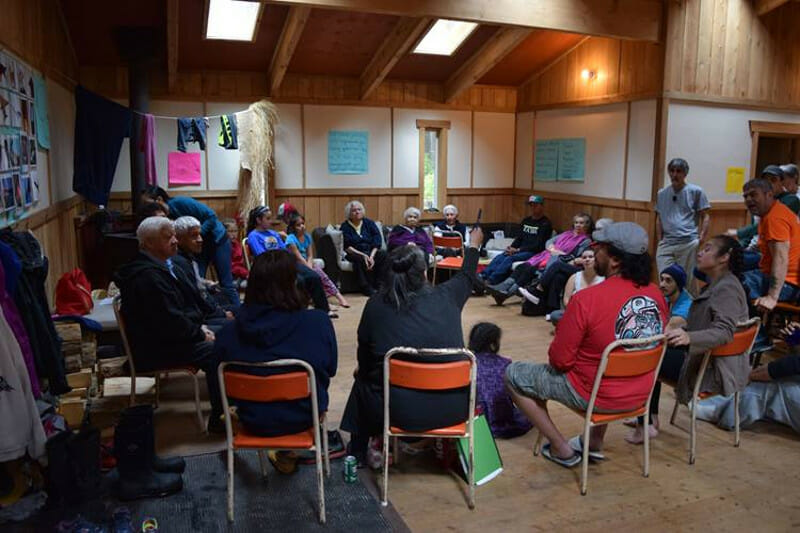
“Local guests really enjoy being able to be out on the land in what was traditionally a fish camp. They can walk out the door and go clam digging,” says Moore. She then shares about her stay at a Hiellen Village longhouse during a 10-day period between site watchmen.
“I don’t like camping—I don’t want to be cold and wet,” laughs Moore. But she found herself smitten by the cozy wood-heated warmth of a Hiellen Village longhouse, its scent of freshly-milled lumber, and the firepits which tend to bring people together—as that village site has for thousands of years. “It feels like you’re in a village—a little community. That’s what I get out of it. It’s kind of magical.”
It feels like you’re in a village—a little community … It’s kind of magical.
Aboriginal Tourism for Economic Development — and Reconciliation
Paula Amos, manager of regional initiatives and communications at Aboriginal Tourism BC, says Aboriginal tourism is one of the fastest growing sectors in BC’s $15.7-billion tourism industry. “One in four visitors to BC are hoping to include an Aboriginal experience in their travels,” she says.
With Haida Gwaii “on everyone’s bucket list”, says Amos, indigenous-owned businesses like Hiellen Longhouse Village are uniquely positioned to capitalize on this market. Amos particularly admires how the Village’s self-contained, weather-proof longhouses extend Haida Gwaii’s tourism season and complement services provided by about 10 other indigenous-owned tourism businesses on Haida Gwaii: “It’s such a unique place to stay, right on the ocean!”
Amos says Tlielang Hiellen exemplifies how a new generation of up-and-coming indigenous business leaders are seeing tourism as an economic driver that can build capacity, and keep people (and dollars) in indigenous communities—but also to promote reconciliation by building friendly relationships. “It’s a good way to tell our stories and share our culture,” concludes Amos.
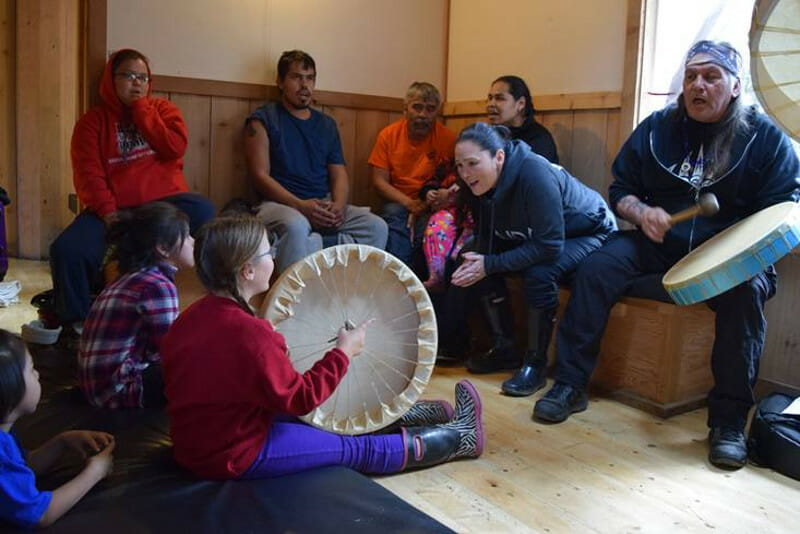
Key Challenges and How They Were Overcome
Moore generously shared some of the challenges that Old Massett Village Council staff grappled with during the start-up of Hiellen Longhouse Village—and lessons learned.
Getting Funding
Funding sources included Coast Funds, Coast Sustainability Trust, Service Canada, Haida Gwaii Community Futures, Fisheries Legacy Trust, the Gwaii Trust Society, the Tribal Resources Investment Corporation, Western Economic Diversification Canada, and BC’s Labour Market Partnership Program.
The effort to acquire funding required some adjustment to the changing political priorities of the federal government, as it went from a minority to a majority government. It also required a careful balancing of funder guidelines against project components—such as training, wages, and capital costs. Moore methodically assembled a budget sheet in which each project component—such as wages or capital costs—was colour-coded according to the guidelines of what she calls a “rainbow of funders”.
That said, Moore remembers “heart-breaking” days when potential funders nixed her carefully crafted proposals. And Old Massett Village Council Economic Development Officer John Disney would insist she try again, write another one. “There’s a lot of ‘nos’ in this world,” says Moore. “Persistence is key!”
There’s a lot of ‘nos’ in this world. Persistence is key.
Remote Location
Getting goods and people to Tlielang Hiellen’s comparatively remote location effectively tripled transportation costs. Moore met this challenge by re-igniting her fundraising effort, and this time around, she had a completed longhouse and three cabins to show funders. This actually strengthened the case for support. “We ended up accessing funds from organizations that didn’t look at us in the beginning,” says Moore.
Supportive relationships that often characterize small, remote communities also played a role, when a local alerted Moore to the fact that a representative of a major funder just happened to be vacationing in the area. Moore was able to connect with the representative, show the site and the cabin, and make the pitch in person. That helped secure a key piece of funding. “The place kind of sells itself—but we needed to get them there,” says Moore.
Greening Operations
Hiellen Longhouse Village was intended to be as green as possible, but the first choice for power—wind-generated power—wasn’t feasible as proximate wind resources weren’t sufficient. Instead, solar panels were installed in trees. These charge a battery that, with a propane-powered generator, can power Village at full capacity for three days. Visitors have light, wood heat, and campfires, but very limited cell and wi-fi coverage—disconnecting is promoted as part of the experience.
A rainwater capture system also proved to be unworkable due to debris. A newly drilled well supplies water for bathing and cleaning, and drinking water is trucked in. Guests are encouraged to conserve water by limiting showers to three minutes.
Predicting Training Costs
Although Moore is very proud of what has been accomplished for the community, she notes that sticking to a construction budget can be extremely challenging when working with people who are new at building. Designed to take 8 months, this project actually took about 1.5 years to complete—taking them well over budget and thereby setting back their break-even point. “If there’s advice I’d give to another Nation, it’s this: really consider the time it takes to build capacity—because it does take more time,” says Moore.
Brain Drain
Construction of the Village was designed to build community capacity as well as infrastructure, and it did just that. But inevitable gaps between projects (sometimes as long as a month) meant that many newly trained workers were lured away by other work. “We found that, once people were trained, they became assets to their community—and found other jobs,” explains Moore—noting that this was a net positive result even if it complicated the project. Now that Hiellen Longhouse Village is operational, staff turnover is an ongoing challenge that Old Massett Village Council has to factor in. “It’s a great place to work, but it is seasonal,” says Moore.
Economic Outcomes
Local businesses provided supplies for construction, including specialty lumber. This project launched Old Massett Village Council’s participation in Haida Gwaii’s tourism industry. Seven smaller longhouse cabins are booked at 70 to 90 percent occupancy (and into next season) at prices ranging from $100 to $150 per night, and group rentals of the large longhouse bring in $250 to $400 per night. Haida Longhouse Village also generates revenue from firewood sales and rental of six tent sites and an RV site, camping equipment, bedding, and barbecues. Visitors purchase local services such as trail guides, fishing, cultural site tours, bike rental, birding, surfing and paddleboard retail and instruction, and boating.
Learn more about new businesses.
Cultural Outcomes
Haida cultural values are affirmed by the buildings’ longhouse-styled design. The cabins are used by Haida citizens for seasonal harvesting of traditional foods, like razor clams. Haida values and history are promoted through partnerships between Hiellen Longhouse Village, a local indigenous dance group, and a local culinary arts program to stage cultural events for visitors. The longhouses have been used for spiritual workshops by the local health center, Haida language camps, and a biennial Gathering of Nations event that for about 200 indigenous youth. The Village was recently used by a cast of Haida actors to rehearse a feature-length film entirely in the Haida language. Community members’ pride in this project was clear at the June 21st, 2017 raising of a new totem pole (read about the pole-raising and the lead-up to it). The 18.9-metre pole was produced by a seven-month Haida mentorship program in which eight young apprentices worked under direction of a master carver, cultivating their innate talents, self-discipline, self-esteem, and entrepreneurialism. The young carvers’ pride and confidence was evident to the 1,200 witnesses to the pole-raising, and the new pole affirms Haida citizens’ long relationship with this site.
Old Massett Village Council sees Hiellen Longhouse Village as the first phase of a much larger project that will showcase Haida culture and history: an extensive Haida Trail network that will link the Village, Tlaga gaw tlaas, Halibut Bite, Kung Naden, Jalun, Kuista, and Tllaal Tlell River.
Learn more about cultural assets.
Environmental Outcomes
Hiellen Longhouses were designed to reinforce the value of water and ecosystem health. All water (except drinking water, which must be brought in) comes from an on-site well. The Village heavily promotes water conservation, encouraging guests to limit showers to three minutes. The longhouses are completely off-grid and heated with a renewable resource—local wood. Power is supplied by solar panels that charge a battery pack that, with a propane generator, sustains the Village at full capacity for up to three days at a time.
Learn more about protected areas.
Social Outcomes
This project created two new permanent full-time jobs, one new part-time job, and two seasonal jobs for site watchmen and a manager—all of which are held by First Nations people. During construction, more than 20 people were provided with full-time work over a one-year period, and at least eight people had full-time work for over two years. It also provided 325 days of carpentry training, as well as career counselling, team-building, and personal development training. Cabinet makers went on to complete training at BCIT towards Red Seal joinery accreditation. The success of this project and its trained crew has spawned an Old Massett Village Council-owned cabinet-making business that uses local wood, serves Haida Gwaii residents and seeks to involve young people at risk of dropping out of school. Hiellen Longhouse Village offers infrastructure that supports outdoor education and activities provided by seven (local and off-island) schools. Its partnership with a local culinary arts program helps support four jobs.
Learn more about skills training.

In 2011, Coast Economic Development Society approved funding for one project of $350,000 to Old Massett Development Corporation, towards the construction of Hiellen Longhouse Village.
Partnerships
- Council of the Haida Nation
- Service Canada
- Coast Sustainability Trust
- Haida Gwaii Community Futures
- Fisheries Legacy Trust
- Gwaii Trust Society
- Tribal Resources Investment Corporation
- Western Economic Diversification Canada
- Labour Market Partnership Program (WorkBC)
- Business Development Bank of Canada
- Aboriginal Tourism Association of BC
- Northern Development Initiative Trust
Online Resources
- Hiellen Longhouse Village website
Reserve your stay at Hiellen Longhouse Village - Video tour of area around Hiellen Longhouse Village
This animated, interactive video tour offers a snapshot of area attractions - Things to do near Hiellen Longhouse Village
Local activity ideas - Aboriginal Tourism B.C.
Numerous training, business development, marketing and promotion services for indigenous-owned tourism businesses - Aboriginal Tourism B.C.: Authentic Experiences Program
Certification program that distinguishes tourism businesses and organizations that are majority indigenous-owned/operated and offering culturally appropriate content - Aboriginal Tourism B.C.
Information about places, events, and packages for visitors wanting experiences that connect them with B.C.’s indigenous people, history, and cultures - “Edge of the knife: Three to the power of all”
A May 2, 2017 article by Council of the Haida Nation about a two-week intensive Haida language training for actors at Hiellen Longhouse Village. - “Reviving a Lost Language of Canada Through Film”
June 11, 2017 New York Times article by Catherine Porter about the April 2017 Haida actors’ language-training workshop at Tlielang (Hiellen) and the feature film they are preparing for.
Published On July 27, 2017 | Edited On February 26, 2025

